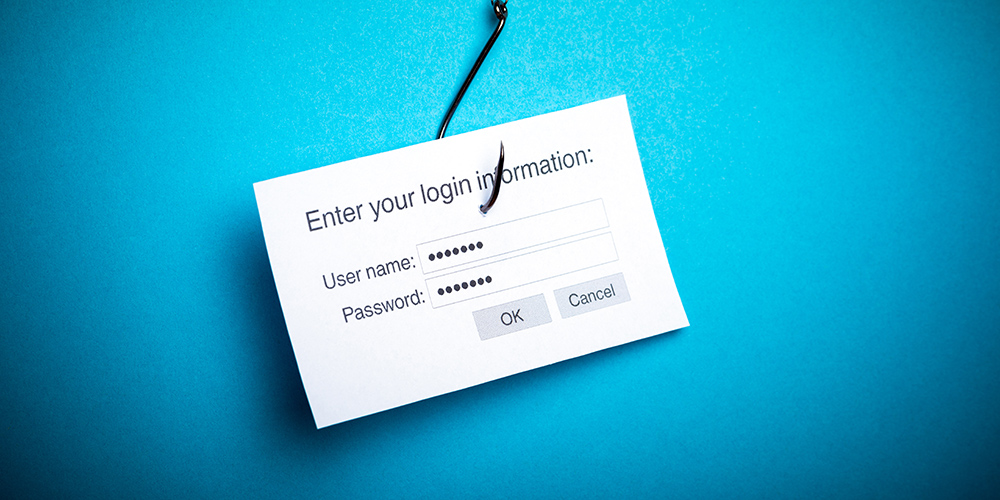
May 9, 2023 | SMB Technology, SMB Technology, SMB Technology, SMB Technology, Technology News
Like rock and roll, remote work is here to stay. Customers have numerous ways to reach your business, but not until the advent of communications and collaboration software have these methods been integrated. Read on to learn more about this way of connecting multiple touchpoints. The Benefits of Communications and Collaboration Anyone who has used Zoom phone and videoconferencing or Microsoft Teams over the past few years has learned how easy collaboration and communication is between coworkers and customers. Such integration can help workers collaborate online and on video along with sharing files and customer information, anytime and anywhere. What’s more, customers can choose how they communicate with you, switching easily from one channel to another. On the customer-facing side, providing customers with their favorite way of communicating gives them a positive experience with your company. Integrating communications and collaboration applications, more than having them available separately, allows a customer to stay connected from voice mail, to phone, to video, without missing a beat. This positive Customer Experience (CX) can help you not just please customers but stand out from the competition. Using Customer Relationship Management (CRM) software can expedite calls, allowing workers to serve customers more quickly. Justifying the Investment in Customer Experience While such flexible and fluid communication sounds ideal, your company still has a budget. How, then, can you justify the omnichannel investment? According to a trends article by CompTIA, a third of channel firms report they will seek workers with experience in communications and collaboration (including social media) approaches to customer communications. An earlier article reports that companies using an integrated...

May 2, 2023 | SMB Technology, SMB Technology, SMB Technology, SMB Technology, Technology News
As shown by recent wild weather, one never knows when a natural disaster – or for that matter, a man-made one – might strike. How can you prepare your business to stay running and have access to data in case of such an event? Read on to learn more about using cloud backup to safeguard critical data. Importance of Data Backup Backing up your data is obviously necessary, but where to put it? Keep it on premises and risk having it inaccessible if a disaster disrupts your business? What if your business is closed for weeks or even months? One rule, the 3-2-1 rule, advises having copies of your data in multiple locations. Loss of critical data can result in interruptions to business operations, loss of trust of customers and other stakeholders, and even penalties for failing to comply with data protection regulations. What if one of the locations for data backup and storage is the cloud, with your data managed by a cloud service provider? Benefits of Cloud Backup to Protect Data Simply put, cloud backup is making copies of your data to store in the cloud, with the cloud provider supervising its security and integrity. Your business will have access to data in case of a minor or even major disaster, whether a power outage of a couple hours or a longer disruption. Your IT team can send copies of your data to the CSP for storage and backup, allowing workers to access it anywhere. With the CSP furnishing the infrastructure, as well as providing monitoring and reporting services, data remains safe from...

Apr 13, 2023 | SMB Technology, SMB Technology, SMB Technology, SMB Technology, Technology News
What if, instead of being limited to an in-office phone system with its possibly rough connection and dropped calls, you could experience seamless communication via the cloud? This is possible with Voice Over Internet Protocol (VoIP, for short), an Internet-based unified communications solution. Read on to learn more about VoIP’s benefits and considerations, and about looking for a potential provider. Benefits of Unified Communications Telephone technology has come a long way since the time calls were transmitted over copper wires. Nowadays, with VoiceOver IP, users can call each other using an Internet-based cloud solution. With this different interface, the provider handles back-end infrastructure and all the customer needs is the internet connection. This technology is flexible and scalable, and can be integrated with your company’s applications to help speed business processes. Lines can be added easily via your company’s internet router to accommodate more remote workers, and they can access your network and its applications. Like with other cloud offerings, VoIP can convert the capital expense of phone sets to a flexible internet-based subscription model. Preparing Your Network for Unified Communications No matter your company’s needs, considerations remain when considering cloud-based phone technology. First, is your company’s network strong enough, with sufficient bandwidth, to support more traffic? Does your network and all connected devices have the most current antivirus and anti-malware definitions? Another question to answer: have you considered what features of a provider’s plan would best align with business goals? Considerations When Choosing a Provider Numerous providers exist, and offer internet telephony packages with varying features. Some can furnish you with things...

Apr 5, 2023 | SMB Technology, SMB Technology, SMB Technology, SMB Technology, Technology News
Cyber attacks, including phishing attacks, seem to always be in the news these days. Ransomware, malware, data breaches, all are on the rise, with several high-profile attacks in recent years. Even more recently, the failure of the Silicon Valley Bank might promote spoofed bank websites and bank communications as attempts to gain access to company networks and personally identifiable information. Read on to learn more about the dangers of phishing attacks as well as how to recognize and prevent them. The Consequences of Phishing According to a 2021 CISCO report, many cyber attacks happen by way of fraudulent emails (and sometimes texts) wherein malicious actors masquerade as legitimate individuals or entities to get confidential information or to infect networks with malware. The sender of the email seems to be a legitimate sender, perhaps from a well-known company, or business the company has interacted with before. They may include an attachment appearing to be a PDF, or a URL in the body of the email. According to CISCO, nearly 90% of data breaches stem from phishing attacks, the majority of these attacks coming via email. Losses from these attacks are expected to reach $10.5 trillion by 2025–and the losses are not only financial. In addition to penalties for failing to comply with data protection regulations and loss of money through theft, reputational loss is a serious consequence. People’s dependence on technology for conveniences like e-commerce and gathering information online makes it easier for phishers to craft an email that appears genuine. How do you recognize what a phishing email looks like, and train your workers to...

Mar 16, 2023 | SMB Technology, SMB Technology, SMB Technology, SMB Technology, Technology News
According to a recent IDC survey, fears of an economic recession still loom. How can you target your company’s IT spending, getting the most for your dollar while staying within your IT budget? Read on to learn more about allocating your tech spending in the months to come. How Economic Outlook Influences Technology Spending According to Gartner, tech spending in 2023 is estimated to reach $4.6 billion. Yet an IDC survey paints a more cautious picture. According to the results of this survey, small to medium-size businesses are fearful about an economic downturn in 2023. About 60% of SMBs surveyed expect at least a moderate recession, and 20% anticipate a severe downturn. Does this mean putting the brakes on all IT spending? Not necessarily. Allocate Spending Wisely to Meet Business Goals Rather than stopping all new spending, SMBs need to consider purchases in light of how they support overall business goals. For example, automation is a current trend. How will it help your business? Which processes can be automated, and what business goals are supported? Automation can help save on labor costs, too. Chief Information Officers (CIOs) need to work with Chief Financial Officers (CFOs) to determine what purchases will deliver the best ROI relative to cost. A good first step is an IT audit. Starting with an Information Technology Audit An information technology audit involves investigating and evaluating your company’s IT systems, infrastructure, policies and operations. An audit helps determine what assets your company currently owns, and where these assets currently are in their life cycle. What assets are in depreciation, and need to be...

Mar 9, 2023 | SMB Technology, SMB Technology, SMB Technology, SMB Technology, Technology News
How do you know how strong, secure and flexible your company’s IT network is? Does network traffic move along seamlessly, or get bogged down by insufficient bandwidth or other bottlenecks? Even more important, can you count on your network to keep your data secure, safe from attack or compromise? Read on to learn more about assessing the health of your network by answering these and other questions. The Marks of Network Health A healthy network has enough bandwidth to handle traffic from mission-critical business activities, the flexibility to provide failover for seamless operation and the security to protect data and applications from compromise. Your network is the backbone of your IT infrastructure, and digital transformation, data protection, cloud computing, communication and collaboration applications all depend upon a strong network to function at their best. Performing an Audit of Your Network Has it been a while since you’ve assessed your network’s health? An audit is a good place to start. The gathering, analysis and study of network data can show where weak spots lie, whether they’re bottlenecks that traffic can’t clear, or spots in the network that aren’t secure. Operating system patches can be applied, and any versions of anti-virus and anti-malware definitions updated. With a clear idea of your network’s strength and security, it’s easy to know what to fix. Consider the Human Element of Network Security Technological tools aren’t all that’s needed to safeguard your network. Your workers also play a vital role. If they manage their passwords well by establishing hard-to-guess ones at the start and changing them periodically, they can...







